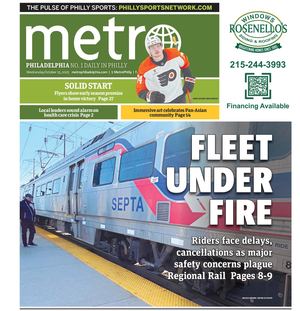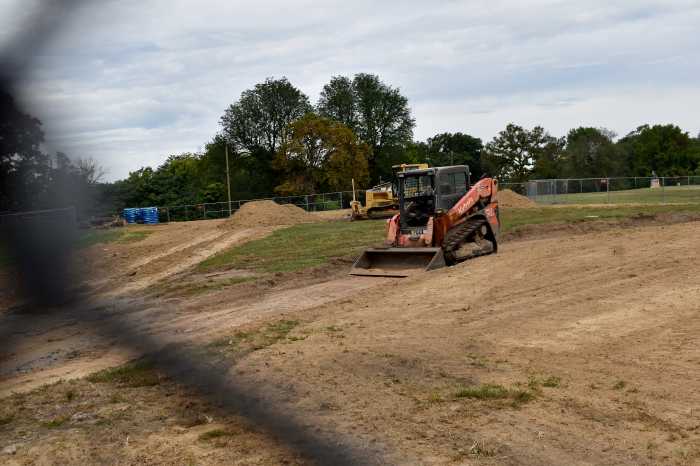A horrific tragedy took place on Spring Garden Street last weekend, and you probably read about it in Tuesday’s Metro. In light of that, it’s worth noting where upgrades to Spring Garden Street stand, and what can be done to make the street safer for all road users as soon as possible.
A plan was birthed in 2010 to create a middle-lane “greenway” on Spring Garden Street, which would be part of the East Coast Greenway, a series of paths along the eastern United States which, when complete, will connect from Maine to Florida and will be completely rideable by bicycle. But that plan is not complete. Not even close.
So. Depending on the block, Spring Garden Street’s bike lanes east of the Schuylkill River are either standard 5-foot lanes or buffered lanes, the latter of which are striped with a small painted buffer between the bicycle lane and the motor vehicle lane. But long term, this bike lane, like bike lanes all over Philadelphia, needs physical protection.
And there is still a plan for that. But it’s changed. Instead of a median Greenway-style trail through the center of Spring Garden Street, as of a couple weeks ago, the project has turned into a parking-protected bike lane project with curb bump-outs, funds for which are still being raised.
The good news: This is a better solution. The bad: It’s going to take tens of millions of dollars, and perhaps a decade, to complete.
Then there’s the problem stemming from Harrisburg. Because Spring Garden Street is a PennDOT road, state legislation still needs to be brought up for a vote, especially since PennDOT will likely be involved with the construction. That bill, introduced by State Sen. Larry Farnese (D-Phila), is still sitting in the state Legislature.
So, how do we speed up the process?
First, Harrisburg needs to pass the curb bill — now. Nothing can happen until that is realized. The best way to further this process is to reach out to your state representative and demand it.
Once that is done, here’s what the city should do: Flip the motor vehicle parking lane and the bike lane. The buffer between parked cars and the bike lane would be narrower than the buffer on West Chestnut Street, and there would still be a risk of getting “doored” in the bike lane by passengers exiting their car without looking. But it would still be safer.
On blocks where there is not enough room for a buffer, consider eliminating on-street parking in non-residential areas and protect the bike lane with some sort of barrier.
Although this proposal is not a standard design, it would be a good option for both the city and the very local residents of the areas that will be protected. There is no “if” Spring Garden Street will be protected — there is only a “when.”
Right now, the “when” is far in the future because of the funding and the legislation. If the city flips the parking and bicycling lane with less room than desirable as a pilot, it will give residents a better idea of what the street will look like, and how it will function, after the capital project is complete. Residents will also be better informed when it comes time to choose a final design for the corridor.



























